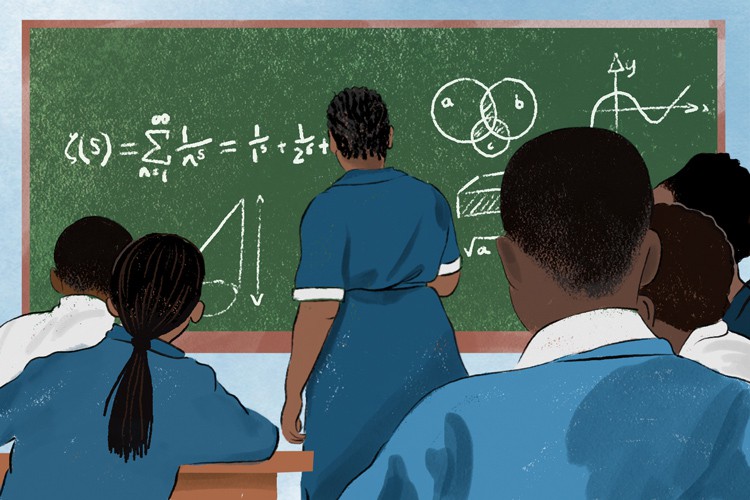
3 March 2021
The Zero Dropout Campaign published a report last week on learner dropouts across the country. It found that learners were more likely to leave school before matric if they had repeated a grade or had other disruptions to their lives, such as the effects of the Covid-19 pandemic. Illustration: Lisa Nelson
The likelihood of repeating grades doubles when learners reach high school. And this increases the odds of them dropping out.
This is according to the latest report published by the Zero Dropout Campaign on 25 February 2021. The report found that learners dropped out of school because of a combination of factors, such as failing grades and disruptions in their lives.
GroundUp spoke to the head of Beauvallon Secondary School in Valhalla Park, Cape Town which reported having a dropout rate of 17% in 2020.
Principal Leonard Jansen said that they started the 2020 academic year with 272 learners but during a year marked by the Covid-19 pandemic, 47 learners dropped out. The school’s matric pass rate was 32%.
Jansen said the school relied on the Western Cape Education Department’s (WCED) Central Education Management Information System (CEMIS) to track learners who are at risk of dropping out.
If learners are chronically absent, the system alerts teachers that they need intervention. “We’ll send out letters to the parents if the learner has been absent for more than ten consecutive days. An official from the department delivers the letters to the parents.
“From there, parents have to respond as soon as possible and come into the school to speak to the teacher and principal,” he said. The learner is not allowed back at school until the parents visit.
“Less than 40% of Quintile 1-4 learners are the right age for their grade, meaning a greater proportion of learners in our schools have already repeated a grade at least once. So they already have a greater risk for dropping out,” said Zero Dropout director Merle Mansfield, speaking during the virtual release of the report on Thursday.
According to the study, learners often face multiple disruptions to their education. “Some go without textbooks; others without teachers. Some have to take care of sick relatives; other care for younger children or siblings. Some will stay home because of transport strikes or community violence. For many learners, the journey to completing school is filled with obstacles.”
Mansfield said that “the pandemic exacerbated disruptions” to learners’ lives with lockdown and school closures which resulted in more learners falling behind in their set classwork.
Covid caused learning to slow or stop, worsened nutrition and mental health for learners, and heightened the risk of pregnancy. “During the Ebola crisis in Sierra Leone, adolescent pregnancy increased by up to 65% in some areas, and in neighbourhoods hardest hit by the epidemic, girls often left school because of the weight of domestic responsibilities, or pregnancy,” says the report.
There is no concrete data on the total number of learners who dropped out in 2020, but by 9 October 2020, the Department of Basic Education reported that there were about 320,000 learners who could not be accounted for. Risk of pregnancy was heightened.
The study also highlights concerns that some schools might be holding back learners who are unlikely to pass the matric exams in order to meet the school’s pass rate target. “Whether it’s holding back learners to protect pass rates, or pushing them through to meet policy requirements, decisions about learners’ grade repetition sadly often have very little to do with supporting the learner or helping them catch up academically.”
The report suggests that one of the best ways to prevent school dropouts is to track a learner’s academic performance, behaviour and chronic absenteeism. “Just tracking those three indicators through an integrated risk report allows us to flag when a learner starts showing risk factors or levels of disengagement in the classroom,” said Mansfield.
The organisation is also calling on the government to track learners better in order to “hold people accountable” and could show patterns to help reduce the number of learners who drop out of school.
Kerry Mauchline of the WCED said all schools in the province have School Improvement Plans (SIP) which include interventions to reduce learner dropout.
Mauchline said SIP “avoids the practice of ‘culling’ to improve pass rates. ‘Culling’ involves losing weak learners along the way so that schools and provinces can achieve a higher pass rate.”